It is very easy to determine your window treatment’s width and height. Most importantly, there is no absolute rule for how tall or wide coverings should be; your preference is the guide. For example, many people prefer their window treatments to be larger than the window to create the illusion of a larger opening, while others prefer a closer fit.
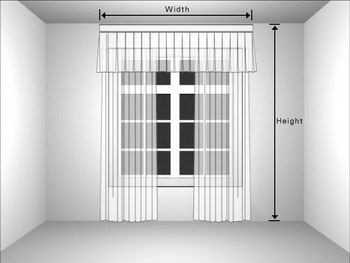
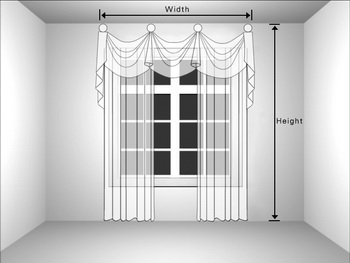
Note the measurements illustrated above will not necessarily be the exact height of the panel itself. Depending on the type of window treatment you choose, some require tracks and hanging rings; therefore, the height of the panel will be the height measurement minus the height of the track and the ring, plus some other deductions. Luckily, you don't have to worry about these details. We will calculate that appropriately according to the entire window treatment dimensions you provide.
The following are suggestions for how to measure your windows.
Width:
Measure from the outside of one side of the window casing to the outside of the opposite side (note illustration below); then add 10-16 inches (25-40cm) to that measurement. This figure will be your window treatment’s “width.”
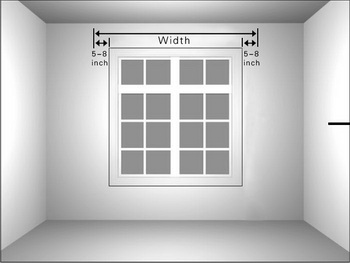
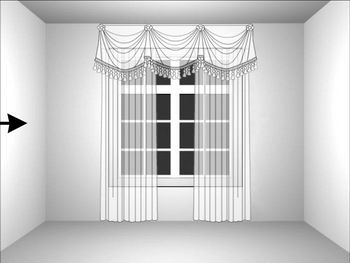
By measuring this way, the final product should extend 5-8 inches (13-20cm) on either side of your window casing. This will help minimize any obstruction of the view from the window by the drapery panels when they are opened.
If you are a bit daring, you can achieve an even more dramatic visual effect by making the window treatments wider still! Simply add at least 16 (2*8) inches (40cm) to the entire width measurement of the window. For example … if your actual window width measurement is 52 inches (132cm), use 68 (52+16) inches (172cm) or more. This “oversize” treatment will make the window even grander and more opulent to the eye. However, if you do choose this option, please note that both sides of the window moldings may be visible when the drapery panels are opened.
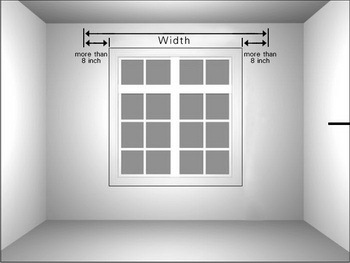
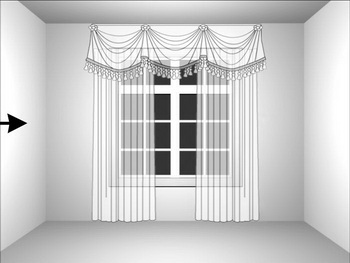
For window treatment designs that use curtain rods, you needn’t worry about the length of the decorative finial on either side of the rod when you are calculating the window treatment’s width. However, you do need to be aware that finials will add more width to the final product when it is installed. Make sure you have at least 4-8 inches (10-20cm) of extra room on both sides of the window treatments to accommodate the extra width if you are planning to use such designs in a tight space.
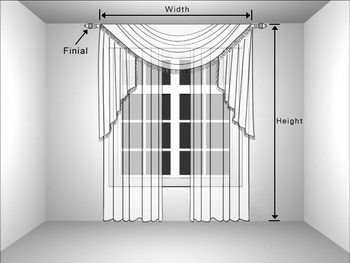
We suggest you measure each window independently because the actual size of each window may be a bit different even if they seem identical.
Height:
For measuring height, we suggest three alternatives, depending on what best fits your specific application:
1. Measure the distance from the ceiling (or from bottom of the ceiling molding) to the floor. This will be your window treatment’s “height”.
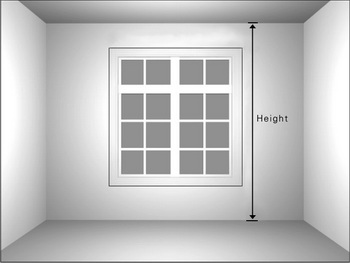
Most commonly, valance and draperies are hung from just under the ceiling (or ceiling molding) all the way down to the floor.
If you have a vaulted ceiling, it’s still easy to do. You can locate the top of the window treatment by using a nearby standard-height wall-ceiling as your reference. (Note the photo below, as one example.) Even in rooms with multiple, or irregular vaults, there will usually be at least one standard wall to use as a reference for your measurement.

2. Measure the distance from 6-10 inches (15-25cm) above your top window casing to the floor. This will be your window treatment’s “height”.
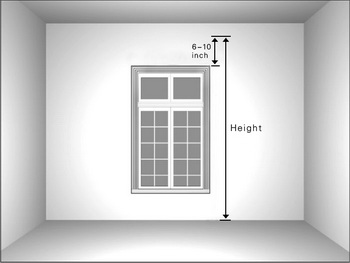
Sometimes, hanging a window treatment all the way from the ceiling is not the best solution. For example, if your ceiling is too high or your window is too low. If this is the case, you may want to place the window treatment 6-10 inches above the window casing instead. Of course, you can set it higher if you want. Just keep in mind that valances are normally 15-25 inches (38-63cm) high and placing the valance higher may allow the top part of the window casing to show underneath the valance when the drapery panels are opened.
3. If you like a puddled drapery bottom, add 4 inches (10cm) to the total of the height measurements.
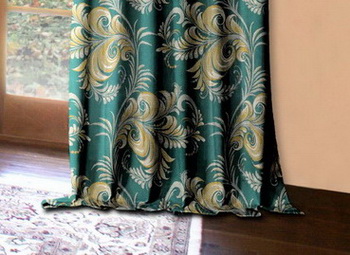
Traditionally, people let the drapery’s bottom hang just above the floor. If you prefer the bottom of the drapery to form a gathering on the floor (note photo above), then you should add 4 inches (10cm) to your measurement, for your final window treatment’s height. This will result in a finished product that will gather slightly on the floor when installed. This approach can create a dramatic effect on hardwood floors and fine floor coverings, adding a unique touch of old-world elegance to your home. However, we recommend puddling for decorative panels only. If your panels are going to be opened and closed regularly puddling is not recommended as the bottoms of the draperies will get dirty very quickly.
